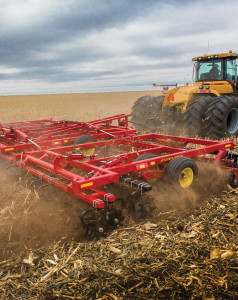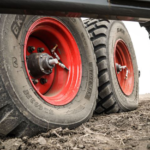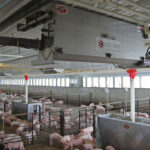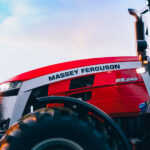Agro-Brief: Creating Performance Seedbeds
Replace worn sweeps, blades, and harrows Level tillage tools Set working depths Monitor speed Avoid Compaction Developing a good seedbed is important to get the crops off to a good start; yet often overlooked or difficult to obtain. Seedbeds need...
Agro-Brief: Creating Performance Seedbeds
Replace worn sweeps, blades, and harrows Level tillage tools Set working depths Monitor speed Avoid Compaction Developing a good seedbed is important to get the crops off to a good start; yet often overlooked or difficult to obtain. Seedbeds need...- Replace worn sweeps, blades, and harrows
- Level tillage tools
- Set working depths
- Monitor speed
- Avoid Compaction
Developing a good seedbed is important to get the crops off to a good start; yet often overlooked or difficult to obtain. Seedbeds need to have uniform residue distribution, loose aerated soil structure, and a level soil profile on both the surface and at the working depth of shanks or blades. As we move into spring consider the following:
REPLACE: Now is a good time to check spring tillage tools for damage and wear. Replace worn shovels, blades, and harrow components. It is difficult to do a good job with worn ground-engaging components.
LEVEL: Make sure tillage implements are level fore to aft and side to side. An un-level field cultivator will cause some shanks to go in deeper than others, which will create undulations in the subsurface soil profile and affect seed placement. Corn plants that emerge late become runt plants, with reduced yield potential. Un-level discs can quickly cause drainage issues by creating hills and valleys in the field. Check the tool’s side-to-side and fore-to-aft level. Each Sunflower tillage tool operator’s manual contains a step by step procedure to accurately adjust the tool for optimum performance.
DEPTH: Be sure to carry some weight on wheels. It is sometimes tempting to retract tires completely to allow tools to work as deep as they will go; don’t do it. This will nullify every leveling and depth adjustment made to the tool and lead to fields with little seedbed uniformity as the tool will have variable depth based on soil conditions.
SPEED: Follow operator manual recommendations. Too much speed may cause field cultivator shanks to relieve, leading to an un-level soil profile and potential weed escapes. Too much speed when operating a disc will cause soil to be thrown off the front disc gang past the point of no return. This will cause an un-level field, possibly leading to surface drainage problems.
AVOID COMPACTION: In addition to these machinery recommendations, it is important to avoid working wet soils in the spring to “dry out” fields. Research proves that the first pass creates 80% of field compaction. This cannot be eliminated until soils are dry again—likely in the fall. Compaction layers impede root development. It is also detrimental to work fields too wet just prior to the planter. This leads to poor seed-to-soil contact. If you can form a mud ball that won’t easily fall apart, the soil is too wet.
Online References:
http://adlib.everysite.co.uk/adlib/defra/content.aspx?id=000IL3890W.16NTBZSOT902BX
*e-GronomyTM is a new concept from AGCO that relates how AGCO equipment (e) performs to improve the agronomic (Gronomy) health of the crop.




